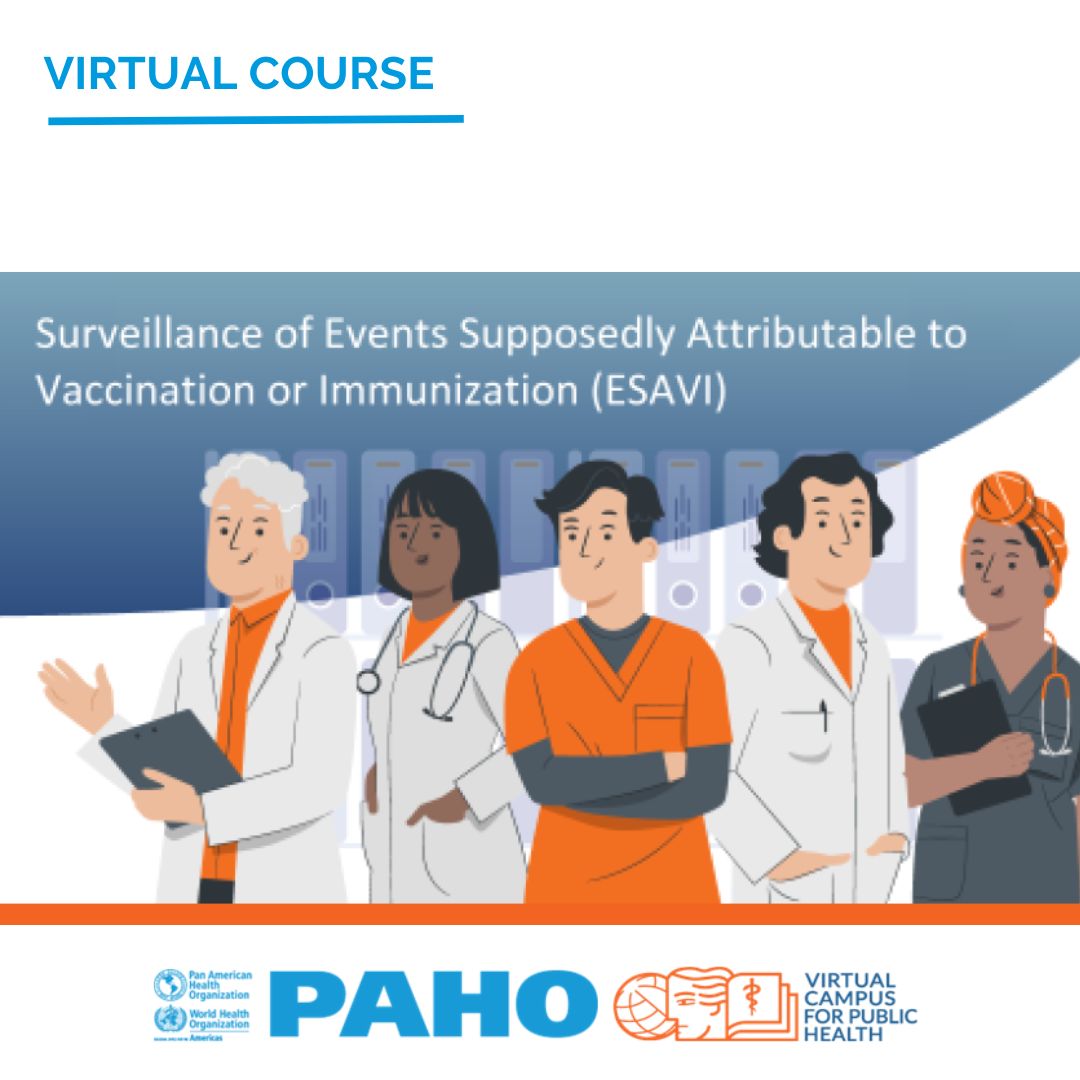
Meeting the goals of the Immunization Agenda 2030 requires, among other things, to focus on monitoring vaccine safety and vaccination to ensure a high-quality supply chain and highly effective vaccines linked to a primary care-based service delivery system.
In the context of the COVID-19 pandemic, which has required the quick deployment of vaccines under emergency authorization, it is imperative to focus on vaccine safety measures, including the surveillance of Events Supposedly Attributable to Vaccination or Immunization (ESAVI).
An ESAVI is defined as an event supposedly attributable to vaccination or immunization (ESAVI) is defined as any untoward medical occurrence which follows immunization, and which does not necessarily have a causal relationship with the vaccination process or the vaccine. The adverse event may be any unfavorable or unintended sign, abnormal laboratory finding, symptom, or disease.
This online course will provide you with the knowledge and skills necessary for the correct development of the ESAVI surveillance cycle, allowing the compilation of useful information on the emergence of adverse events. This information will be used by teams of professionals at the national and regional levels in order to minimize the occurrence of these events and their impact on the population.
The course consists of 10 modules, including information on a broad range of topics, as well as practical activities and the analysis of a case study throughout the course.
Purpose
The purpose of this course is to present technical regional standards for surveillance of events supposedly attributable to vaccination or immunization to guide case management, generate reliable information, guarantee the permanent monitoring of vaccine safety and answer promptly and objectively to the demands of the public.
Furthermore, this course is aimed at strengthening ESAVI surveillance in the region by training healthcare personnel in the basic principles and standardized practices of the ESAVI surveillance cycle across all national teams.
Goals
1. Identify the essential components of a safe vaccination system.
2. Explain the scope and definition of an event supposedly attributable to vaccination or immunization.
3. Recognize the models and principles of ESAVI surveillance.
4. Describe the steps to implement the ESAVI surveillance system.
5. Identify the key factors in ESAVI detection, reporting, and investigation.
6. Identify the key elements of data management and indicators for monitoring ESAVI.
7. Analyze the key elements of an ESAVI causality assessment.
8. Review the actions and response to ESAVI reporting and final case classification.
9. Recognize the necessary elements for correct risk communication.
Target Audience
This course is intended for professionals working in Health Ministries, Regulatory Agencies, Epidemiology Departments, Vaccine Safety National Committees and local healthcare staff with the aim of guiding them in adverse events surveillance, identification, reporting, analysis and communication.
Certified Hours
An estimated 15 hours are required in order to complete the course.
Course Modality
The course is available at PAHO’s Virtual Campus for Public Health (VCPH). Since this is a self-paced course, participants can take it at their own pace. Participants will need between 30 to 120 minutes to complete each module, depending on the participant’s previous knowledge on the topic. In sum, including the total estimated minutes per module, document review, activities and tests, the course is assigned 15 hours of seating time.
Skills
This course will allow you to develop skills related to the management and shared use of information and documentation about immunization, with a rigorous, collaborative and adaptable approach to decision-making in various areas, geared towards achieving the course goals.
Course Structure
The course is organized around a modular structure, allowing participants to advance progressively through the cycle of ESAVI surveillance. However, nonlinear progression is also allowed. The program is made up of an introductory clip, a toolbox, 10 modules and a final assessment.

